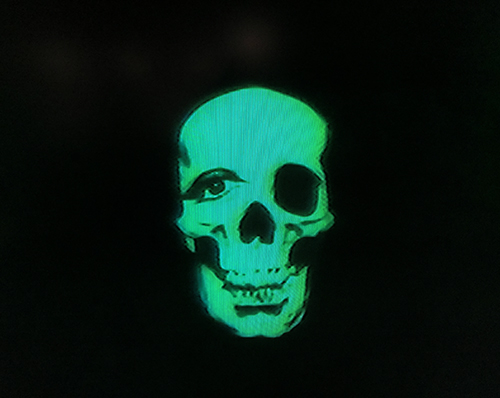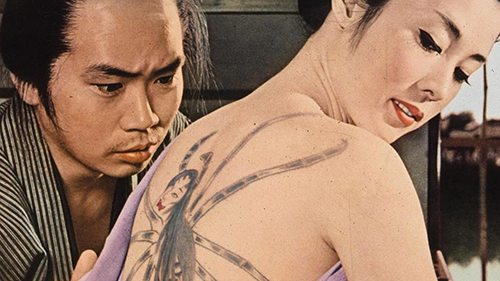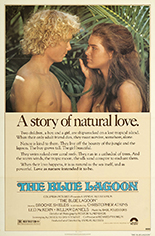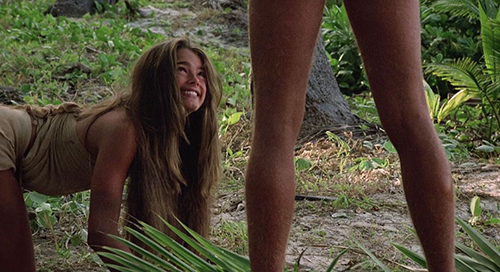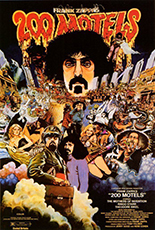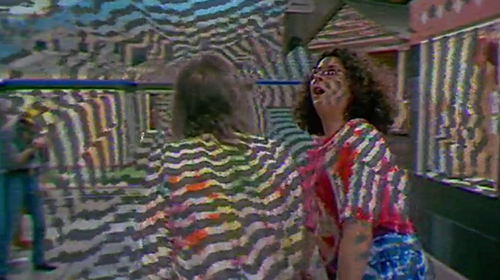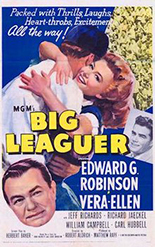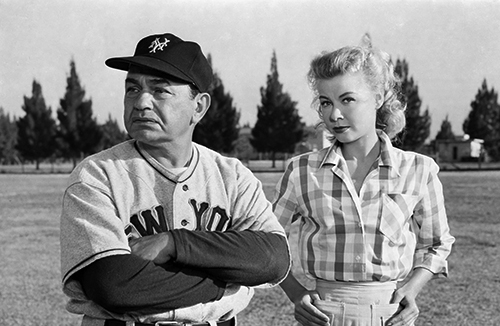
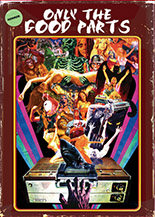 When people talk trailers, someone inevitably scoffs, “They show all the good parts.” As if that’s a bad thing? It certainly isn’t in the world that exists underneath mainstream motion pictures. From blaxploitation to sexploitation with a whole heap o’ horror in between, Film Trauma’s Only the Good Parts dishes out a feature’s worth of proof — 39 trailers in all, roughly organized in themes that include badass broads, possession pics, killer kids, Italian ick and sacrilegious sinners.
When people talk trailers, someone inevitably scoffs, “They show all the good parts.” As if that’s a bad thing? It certainly isn’t in the world that exists underneath mainstream motion pictures. From blaxploitation to sexploitation with a whole heap o’ horror in between, Film Trauma’s Only the Good Parts dishes out a feature’s worth of proof — 39 trailers in all, roughly organized in themes that include badass broads, possession pics, killer kids, Italian ick and sacrilegious sinners.
Like the pair of Colour Correct My Cock compilations, the general selection is noteworthy for overall naughtiness and alternative versions. For example, prepare those loins for the one-two pubic punch of the French trailer for Jess Franco’s Barbed Wire Dolls and the German trailer for Franco’s Love Camp. Those are followed by the Franco-adjacent rump romp Rolls Royce Baby, in which muse Lina Romay is so naked so often, you’ll have (to quote ourselves) “an image of her vagina so thorough and vivid, you could accurately draw it from memory.” Look for Franco’s less dirty-minded but no less nude Demoniac later in the program.
For other name-brand directors, we get Ted V. Mikels’ 10 Violent Women and Al Adamson’s Nurse Sherri, heavy on comparing itself to The Exorcist. A rung — if not an entire ladder — higher on the credibility ladder stands David Cronenberg’s The Brood and Larry Cohen’s creatively effective campaign for It’s Alive and It Lives Again, matched in advertising genius only by whoever wrote the tagline for the X-rated slasher Evil Come, Evil Go: “She’s a Man-Hating, Hymn-Humming Hell Cat!”
Finally, when it comes to the grail of coming attractions — I speak, of course, of obscurities — Only the Good Parts giveth and giveth. I wouldn’t swear on this in the court of law, but I don’t recall even hearing of the likes of The Johnsons, Alley Cat and Beware My Brethren. That goes quadruple for Parts’ greatest piece, She Did It His Way, a 1968 vehicle for seriously stacked stripper Kellie Everts filmed at the Miss Nude Universe Pageant. I’m still not sure what the movie’s about, but it looks life-changing.
All this plus Roger Moore as The Man Who Haunted Himself, the pencil-eraser nipples of Werewolf Woman, a whip-crackin’ Coffin Joe and so much more. And remember, “You’ve not seen all of Marilyn Chambers until you’ve seen Angel of Heat.” —Rod Lott
Get it at Film Trauma or Amazon.

